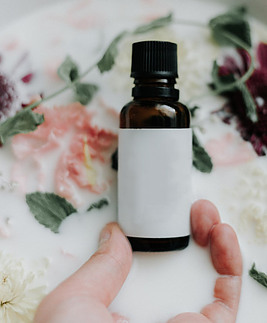Nature 101: Essential Oils Explained
Essential oils are an important part of natural therapies for your body. Because they often smell good, they are also described as aromatherapy oils. We will give you a nature’s 101 lesson and this article will give you the particulars, essential oils explained in clear and concise language with a description of what they can be used for.
As with any item we research, we do not advocate these substances to treat or cure any health condition or disease. We simply explain what’s out there and bring you the information you can use for yourself.
What is an Essential Oil?
They are naturally obtained substances extracted from plant matter for human use. The processes range anywhere from cold pressed methods to distillation of the oil from plant matter.
Many of the essential oils obtained in this manner have interesting therapeutic properties that can be applied due to their complex chemistry. They are not oils in the strict sense of the word but are aromatic compounds derived from nature.
Here’s a little transparency: Our website contains affiliate links. This means if you click and make a purchase, we may receive a small commission. Don’t worry, there’s no extra cost to you. It’s a simple way you can support our mission to bring you quality content.”
Why are Essential Oils Useful?
The uses for essential oils are numerous. Many ancient societies used these type of oils for medicinal purposes. Essential oil use is the root of what is known as aromatherapy.
Some greatest gifts to man have come from plant derivatives. Many substances such as cinnamon bark, peppermint and eucalyptus have proven to be of great benefit.
Perhaps, the best way to look at these uses may be to examine the more common essential oils, their particular properties, and ways they can be utilized.
Essential Oil #1: Lavender Oil
The far most popular oil, lavender oil is most widely used because of its pleasing scent. Often mixed with a carrier oil, lavender oil is employed in various applications.
Lavender oil has both antimicrobial and anti-inflammatory properties. Sometimes it is used as a topical agent to be applied to the skin or can be used as a sleep aid.
By far, lavender oil is great as an additive for baths. Usually it is utilized to added to a bath salt or to bath bomb recipes.
Essential Oil #2: Peppermint Oil
Derived from peppermint leaves, peppermint oil is an essential oil that can be used for a variety of purposes. The leaves are often employed in making teas and other internal applications.
There is evidence that small amounts of peppermint oil may be good for headaches. Peppermint oil diluted with water or mixed with toothpaste can be a potent aid in oral health.
Ongoing research into using peppermint oil to treat IBS has shown promise. Breathing in peppermint oil vapors as an aromatherapy can help with lung congestion.
Essential Oil #3 Citrus Oils (Lemon and Orange)
These two oils are some of my most favorite to use because of their versatility. As a scent for home preparations, these are hard to beat.
A lot of insect repellents (even those made commercially) use these as they serve as natural repellents for insects. Home cleaners also employ these oils as a means for scenting.
Added to a carrier oil, these oils provide a nice, calming effect to the senses. Used in this fashion, citrus oils are quite beneficial for massage and skin emollients.
The fruity smell of citrus oils can be intoxicating. For maximum effect in scenting an area, I recommend use of a scent diffuser. These are a great alternative to commercial air fresheners which often contain harsh chemicals.
Essential Oil #4: Tea Tree Oil
A derivative from the Australian tea tree, tea tree oil is one of the top essential oils out there. Its wide spread use as an antibacterial and antimicrobial are well-known.
The many uses of tea tree oil are well-known. Many commercial products on the market contain it as a part of their composition. Like peppermint oil, when diluted, it can be used for oral applications.
Topical applications of tea tree oil can be used on the skin. When used in this manner, it is often applied in an ointment or cream.
Essential Oil #5: Eucalyptus Oil
Eucalyptus oil’s primary benefit is as an aid in respiratory therapy. The vapors are renown in helping to clear chest congestion and make breathing easier.
A good way to use it for this purpose is to rub it on the chest to allow the vapors to travel to the lungs through the nose and mouth. As with most essential oils, it must be diluted with a carrier oil before being used in this manner.
A similar application can be used to fight aches and pains by rubbing with diluted oil on the affected area. As with all essential oils, check for allergic reaction prior to use over a widespread area.
Essential Oil #6: Frankincense Oil
Known as the “king of oils”, frankincense oil is great used topically on the skin. There is a topical application with a combination of frankincense and myrrh that is commonly used for foot pain.
Frankincense oil can be used as a scent for aromatherapy. The oil has a fresh, woody scent that makes it perfect to add to a diffuser.
You can use frankincense oil on the skin. If you use it in this manner as with other essential oils dilute it with a carrier oil such as fractionated coconut oil. As a diabetic, I often use this oil on my hands and feet as an invigorating agent for my hands and feet. Be sure that you check with a medical professional before personal use.
Essential Oil #7: Bergamot Oil
Another citrus type essential oil, bergamot oil’s uses are legendary. It is derived from a fruit grown mostly in Italy. The peels are often consumed as a tea. Standardized bergamot extract is also used as a dietary aid to support cardiovascular health.
The oil is often used in many applications for skin and beauty applications. Because of its photo sensitivity, it is best used at night or recommended to avoid sunlight for 24 hours after use to avoid skin reactions.
Bergamot oil is wonderful as a light spicy scent to use in a diffuser. It is also great for uses when blended with other oils.
Nature 101: How to Properly Utilize Essential Oils
Essential oils as such, are plant derivatives and if used as an application for the skin, are best when mixed with a carrier oil. Most commonly used carrier oils are olive oil, fractionated coconut oil, jojoba oil, sweet almond oil and avocado oil.
When used with bath salts or bath bomb recipes, oils can be directly mixed with a salt or bath bomb material. In oral applications, a few drops of oil can be diluted to form a mouthwash or mixed with toothpaste.
Remember, the most common rule with essential oils is often a little goes a long way. Use only a few drops in applications for home use and never directly apply them to your skin. If you develop a skin reaction, discontinue use.
While we mentioned seven of the most used oils, there are many more essential oils for use out there. Be proactive and discover the ones that may be the most useful for you. Essential oils are truly nature’s bounty so use them well.









The article provides a comprehensive overview of essential oils, explaining their extraction process, common uses, and potential therapeutic properties. What I appreciated most about the article was its balanced approach. It acknowledges the growing popularity of essential oils while also emphasizing the importance of proper usage and caution.
I found the breakdown of popular essential oils and their specific benefits to be highly informative. The article discusses oils such as lavender, peppermint, and tea tree, highlighting their unique properties and potential applications. It also includes safety considerations and guidelines for dilution and usage, which is crucial information for those new to essential oils.
Additionally, the article touches on the different methods of using essential oils, including aromatherapy, topical application, and inhalation. It explains how these methods can harness the aromatic and therapeutic qualities of the oils to support well-being.
One aspect that stood out to me was the inclusion of potential risks and contraindications associated with essential oils. It emphasizes the importance of consulting with a healthcare professional before using essential oils, particularly for individuals with specific medical conditions or sensitivities.
Overall, “Essential Oils Explained” is a valuable resource for those interested in exploring the world of essential oils. The article’s informative content, practical tips, and emphasis on safety provide a solid foundation for beginners. It serves as a great starting point for anyone looking to incorporate essential oils into their wellness routine while understanding the importance of responsible and informed use.
The article provides a comprehensive overview of essential oils, explaining their extraction process, common uses, and potential therapeutic properties. What I appreciated most about the article was its balanced approach. It acknowledges the growing popularity of essential oils while also emphasizing the importance of proper usage and caution.
I found the breakdown of popular essential oils and their specific benefits to be highly informative. The article discusses oils such as lavender, peppermint, and tea tree, highlighting their unique properties and potential applications. It also includes safety considerations and guidelines for dilution and usage, which is crucial information for those new to essential oils.
Additionally, the article touches on the different methods of using essential oils, including aromatherapy, topical application, and inhalation. It explains how these methods can harness the aromatic and therapeutic qualities of the oils to support well-being.
One aspect that stood out to me was the inclusion of potential risks and contraindications associated with essential oils. It emphasizes the importance of consulting with a healthcare professional before using essential oils, particularly for individuals with specific medical conditions or sensitivities.
Overall, “Essential Oils Explained” is a valuable resource for those interested in exploring the world of essential oils. The article’s informative content, practical tips, and emphasis on safety provide a solid foundation for beginners. It serves as a great starting point for anyone looking to incorporate essential oils into their wellness routine while understanding the importance of responsible and informed use.
As a happy customer of essential oils, I have found them to be a truly natural and effective way to improve my overall well-being. With clear and concise explanations of their many uses, I have been able to incorporate peppermint oil into my daily routine to aid with headache relief and oral health. Additionally, knowing that ongoing research has shown promise for using peppermint oil to treat IBS and improve lung congestion through aromatherapy, I am excited to continue exploring the benefits of essential oils for my body.
Essential oils have many beneficial properties that can make your life comfortable. Lavender oil is great as an aromatic but is also a great sleep aid. My grandmother started her children out on various mint plants for respiratory ailments and those cures were passed down to my generation. I also passed these recipes on to my children. We have learned that as the saying goes “an ounce of prevention is better than a pound of cure”.
Jerry